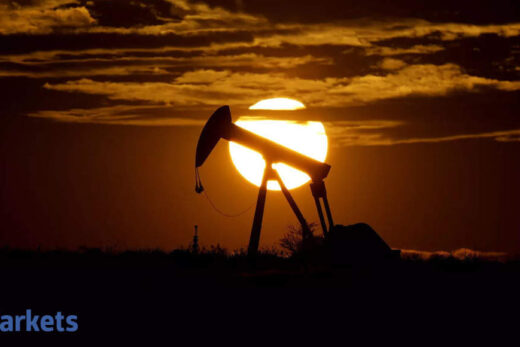Thursday was a busy day of video-conferencing for the alliance’s ministers, starting with a meeting between the 13 members of OPEC proper led by Saudi Arabia, followed by a technical meeting (JMMC) and full discussion between the 23 members of OPEC+.
The wider grouping includes Russia, the world’s second-largest oil producer.
The 23 states in the alliance restarted a technical meeting (JMMC) at around 1500 GMT — two hours behind schedule — with the crucial OPEC+ ministerial meeting to discuss future policy expected to follow.
A Russian government spokesman said “work was continuing” on an agreement, but refrained from commenting when asked if the current impasse could produce a crisis like that seen in March 2020.
Back then, a falling out between Moscow and Riyadh sent US crude prices below zero for the first time in history.
The hitch in Thursday’s discussions came “due to the UAE raising a last minute objection to the Russian-Saudi Arabia deal reached earlier in the day”, according to analysts from Deutsche Bank.
“The UAE, which has raised its production capacity since 2018 when the individual baselines were set, insisted on having its baseline lifted by 0.6 million barrels per day (bpd) to 3.8 million bpd, thereby allowing them a unilateral production increase within the current quota framework,” according to Ole Hansen from Saxobank.
“Negotiations today will be difficult as OPEC+ knows that if the UAE is allowed to produce from a different base, other members may protest,” said Louise Dickson from Rystad.
The Bloomberg agency reported on Thursday that an agreement had been floated which would involve raising production by 400,000 barrels per day (bpd) each month from August onwards, reaching an extra two million bpd by the end of 2021.
This would fit the broad strategy followed by OPEC+ since May: gradually increasing output which it had drastically cut in reaction to the collapse in demand at the beginning of the pandemic.
Since the beginning of the economic crisis the group has held almost monthly meetings to coordinate their response.
Their strategy has succeeded in steering prices back upwards — they are now at levels not seen since October 2018.
The alliance has to navigate a complex market, characterised by an uptick in demand which may yet turn out to be fragile, as well as the possible complication of a return of more Iranian exports in the medium term.
In addition, current high prices are prompting grumbles from large crude consumers such as India.
Also expected to be on the agenda on Friday will be whether the OPEC+ can extend its current production deal “through to the end of 2022”, noted Neil Wilson from Markets.com.



